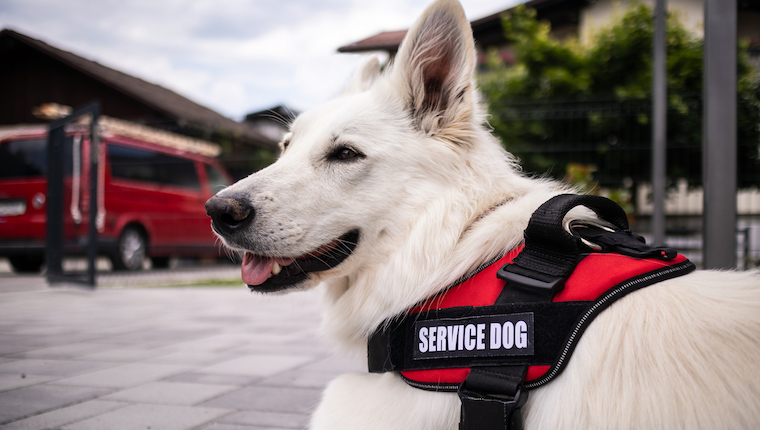In recent years, there has been growing awareness of the good that service dogs can do. Service dogs can provide a variety of trained behaviors to help their people, ranging from seizure alert dogs to dogs trained to assist with PTSD attacks. These dogs have been recognized not only by news outlets for the good that they do, but they have also been portrayed in media like Netflix’s “Dogs.” Many can appreciate that these dogs aren’t just companions; they are necessary medical devices. Unfortunately for those who need their services, there is still some confusion regarding the use of service dogs.
Repeat Customer Turned Away for Service Dog
Kim Woods didn’t anticipate any issues to arise when arriving at a routine nail appointment with her service dog of seven years, Wrangle. According to Woods, the business owners informed her that she was not welcome to return with the dog. They claimed that other patrons complained about a dog being present in the business. They also noted that, as a small business, they couldn’t afford to lose customers. Woods contacted a representative of Service Dogs for Veterans. The organization then sent a letter to the business informing them of the laws in place regarding service dogs. The business sent a formal letter to Woods informing her that her and Wrangle were welcome back into the business.
Why Service Dogs Are Rejected
In recent years, there has been a rising number of people without service dogs who claim their companion animal is allowed inside businesses only welcome to service animals. This has been aided by cheaply made, widely available “service” apparel that leads owners to believe the claim is genuine. Once inside, these dogs are rarely trained to the level a true service dog is, making them a nuisance to the public. They may bark, approach other patrons, or otherwise behave in a manner a service dog is trained not to. Never make a fake claim that your dog is a service dog if they truly aren’t. Not only is it against the law, it’s harmful to those who need service dogs to make daily life accessible.





